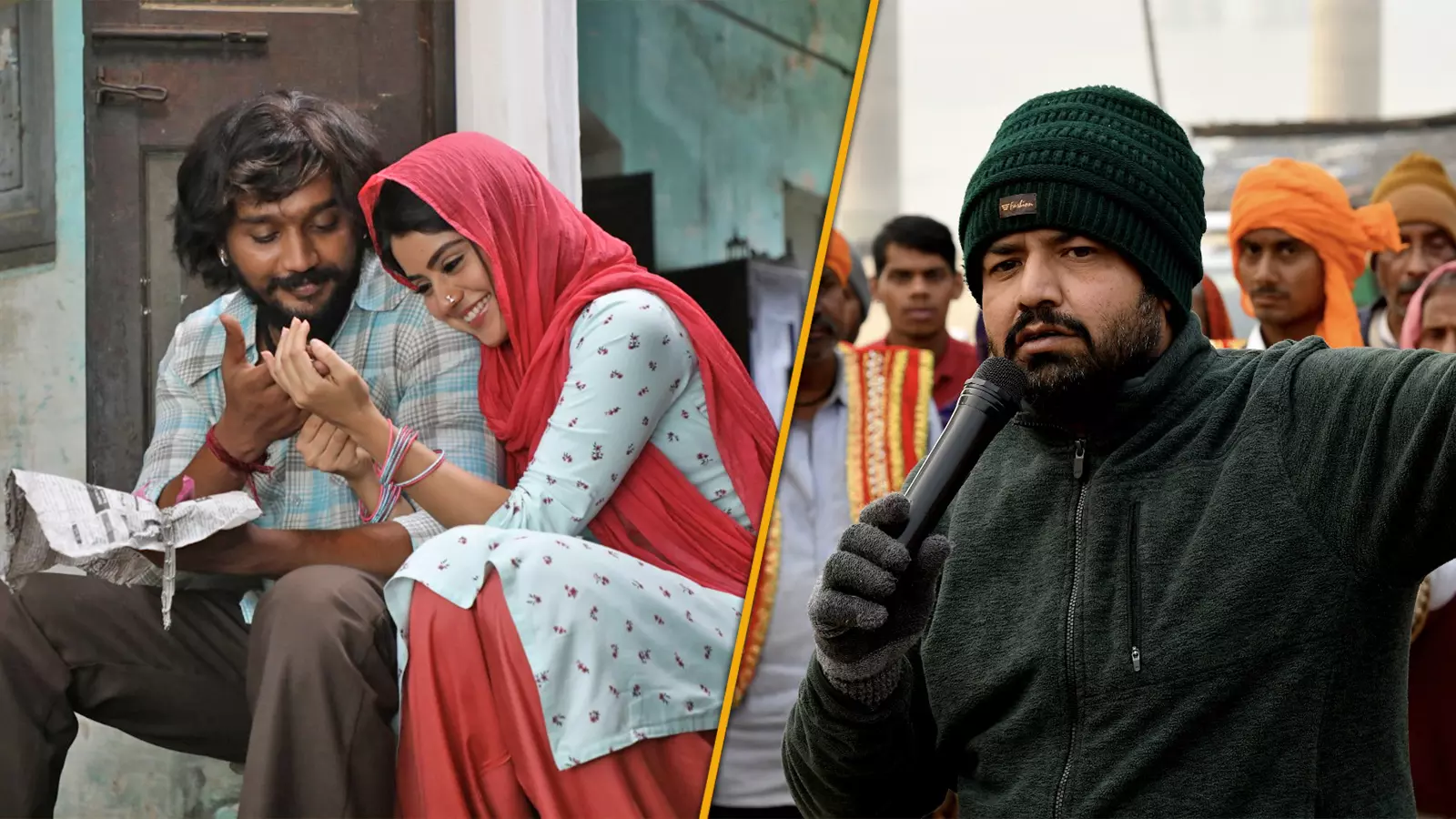
Jayatheertha interview: On Kaiva, a film that chronicles Bengaluru's iconic Karaga festival and more
Kaiva director speaks about Bengaluru of 1980s, inter-religious marriages and city's underworld set against backdrop of the festival

For the first time in the history of Kannada cinema, the centuries-old Bengaluru Karaga celebration will appear on the big screen with all its hues, thanks to filmmaker Jayatheertha, known for making films with native culture and folklore themes.
The filmmaker's eighth venture Kaiva is a romantic story set in 1983 with elements of violence and criminality that play out against the backdrop of the famed annual Bengaluru Karaga festival.
“The love story takes off with the Karaga event and the festival continues to be a part of the film as the narration progresses,” says Jayatheertha.
The 1983 tragedy
Kaiva’s trailer was released by actor Darshan on November 27 amid much fanfare. The film is not just about the Karaga, it also transports audiences to the Bengaluru underworld of the 80s and the tragic incident of the collapse of a seven-story under-construction building in Bengaluru on September 12, 1983, where 123 lives were lost and 120 injured. Even today, it is considered as one of the worst tragedies in Bengaluru city.
The 80s underworld of Bangalore of yore is depicted in the film without glamourising the period, he points out. Notorious dons, who ruled Bengaluru in mid-80s, including Kotwal Ramachandra and M P Jairaj and others, will figure in the film. “Of course, they will get their screen space. But, I have changed their names, as I don’t want to hurt anybody’s sentiments”, says Jayatheertha, who also scripted the film.
Kaiva, which is set to hit the screens on December 8, has Dhanveerrh in a titular role and Megha Shetty as the female lead. Ajneesh Lokanath has scored music for this romantic flick and Swetha Priya, who worked for advertisement agencies, makes debut as cinematographer.
Says Jayatheertha,“She offered the perfect colour and tone to fit into the frame of the 80s. One can get a real glimpse of the period, without making the audience nostalgic.”
In an exclusive interview with The Federal, Jayatheertha talks about what inspired him to make Kaiva. Excerpts:
When did you strike upon the idea of making Kaiva?
You won’t believe it, but I got the storyline of Kaiva on the post-mortem table of a mortuary, while I was looking for maggots (a soft-bodied larva of a fly or other insect found in decaying human bodies).
During the shoot of Bell Bottom in 2019, I went to a mortuary to collect maggots, which I wanted for the film starring Rishabh Shetty. I asked the man who assists in the post-mortem procedure whether he (as post-mortem assistant) gets scared while dissecting dead bodies. The person told me that he would never be scared, but at the same time admitted that he was taken aback by the gruesome way a man was once hacked to death.
My interest was stirred when he narrated the story about this man who was madly in love with a girl. I met all the people connected with the incident, and his near and dear ones, who reluctantly narrated what happened in the life of the person. And, why he took up the machete. I pieced together the stories they told and the result is Kaiva. So, yes, the film is based on a real life incident.
Is the person in question still alive. Did you meet him?
Yes, he is still alive and living happily with his wife. Please don’t ask me about his whereabouts. Interestingly, both the person and his wife belong to different religions. You know better about society’s view about inter-religious marriages these days than me.
Have you faced any problem from the Karaga committee, as Dhananjaya’s ‘Head Bush’ did?
No. I didn’t face any problem. Because I did a lot of research about Karaga and its importance and rituals. The Dharamaraya Swamy Temple Trust, which holds Karaga, will soon meet media and speak about Kaiva. They are very happy with the way Karaga has been projected.
Dharamaraya Swamy temple itself is more than 800 years old and it was built by Vahnikula Kshatriyas, popularly known as the Tigala community. one of the oldest communities of Bengaluru. Tigala considers Draupadi of Mahabharata as the Adi Shakti. In fact, Karaga is testimony to a long-lasting communal harmony practice, as Karaga visits Muslim Darga too during the festival. This Karaga fits into the scheme of things I planned for the film, which is about a love story of two souls belonging to two different religions.
You have a tendency to incorporate folk elements and native culture and blend them into a narrative. Is it a conscious or unconscious attempt?
Of course, it is a conscious attempt. Look at my early films, in Olave Mandara, my female protagonist is an Assamese tribal Bihu community dancer. Bell Bottom projects Neelagara folk tradition of Karnataka; in Benaras, it was Uttar Pradesh’s folk songs' Tony has Garathi Haadu and likewise, Kaiva has Karaga. In this film, I used lather puppets to narrate the story of Karaga and took the help of Padmashree award recipient Belagal Veeranna. This comes naturally to me, as I am a product of theatre.
Similarly, you always opt for newcomers. Is it intentional?
It is a question of choice. I will get the dates of newcomers easily and mould them in the way I want. This is not possible when I take stars.
What about your ninth venture-Aaddarindaa (Therefore)?
It is an interesting project, in which five filmmakers come together to make one film. In this film, characters of one director continue in another director’s story.
Yogaraj Bhat, Shashank, Chaitanya and I have directed one story each. Pawan Kumar of Lucia will conclude the story by knitting together all the stories in the end. I don’t know which genre this film will fall under.

